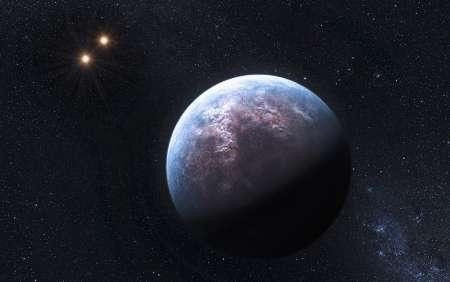The Best Map of "Triton" Neptune's Moon From Data Taken by Voyager 2 Restored and Pieced Together (Watch Video)
25 Year Old Data Pieced Together to Map Triton Neptune's Moon

The best color map of Neptune's big moon, Triton, was created by a scientist from images that were taken 25 years ago by NASA's spacecraft.
Photos that were taken by Voyager 2 when it went past Neptune and Triton on 25 August 1989 were restored and pieced together by Paul Schenk of the Lunar and Planetary Institute in Houston. The map turned into a minute long movie of the Voyager 2's Triton encounter. This was the first and the only spacecraft to have visited the Neptune system.
The mysterious Triton is back on the highlight with the new map that has a resolution of 1,900 ft. per pixel.
"In the intervening quarter century and its many discoveries, I think we have tended to forget how strange and exotic Triton really is! Its effective surface age may be a little as 10 million years, clearly implying that active geology is going on today," Schenk said.
Green, blue and orange filters were used to produce the map. A NASA official stated that the colours of the map have been enhanced but still show the Neptune moon as human eyes would see it.
Triton is the only moon in the solar system to orbit in the opposite direction of its companion planet. It is Neptune's largest moon that was discovered by William Lassell, an astronomer in England.
Triton has an exclusive terrain that has never been found anywhere in our solar system. This could be because of its frozen atmosphere that is warmed by Neptune.
"The cantaloupe terrain, which I interpreted back in 1993 as due to crustal overturn (diapirism), hasn't been seen anywhere else. The volcanic region, with its smooth plains and volcanic pits large and small, is the size of Texas. And the southern terrains still defy interpretation," Schenk wrote on his blog.
The video showing the approach of Voyager 2, its encounter and its departure was released by Jet Propulsion Laboratory.
The Voyager 2 swiftly passes Triton when the northern hemisphere was in shadow. Less than half of Triton is visible due to the long rotational period when it is compared to the encounter.
Source: YouTube/ NASA Jet Propulsion Laboratory





















